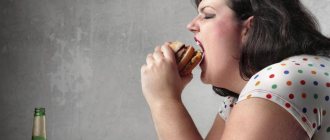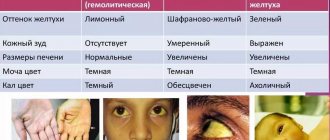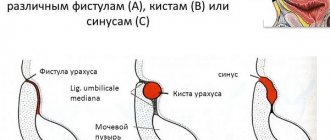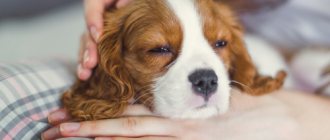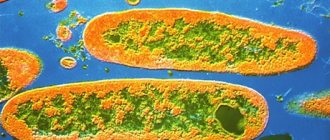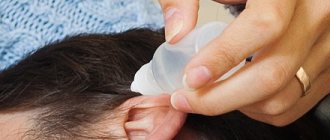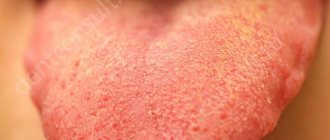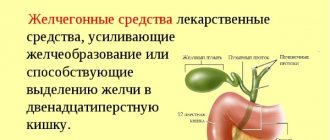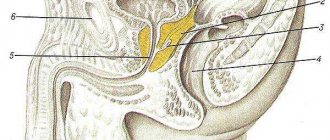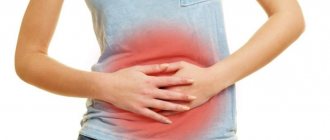Biliary dyskinesia (BD) is a functional disease of the biliary system, which is based on impaired motility of the gallbladder and sphincter of Oddi, as well as increased visceral sensitivity.
The term “functional” means that significant pathological changes in the organ cannot be detected, at least by the methods of modern medicine. That is, a dysfunction leads to a disease, and not, on the contrary, a disease changes the function of an organ.
Visceral literally translated from Latin means “relating to the internal organs.” The sphincter of Oddi is a special anatomical formation located at the place where the bile ducts and pancreatic ducts empty into the small intestine. It regulates the flow of bile and pancreatic juices into the intestinal lumen.
Bile is necessary for the normal digestion of fats. It helps turn them into a fine suspension so that digestive enzymes can be evenly distributed and break down large fat molecules into “building blocks” that can penetrate the intestinal wall into the lymphatic system.
Bile is produced in the liver and then collected in the gallbladder. When fatty foods enter the small intestine, the gallbladder contracts and secretes bile. This requires coordinated contractions of both the bladder itself and the bile ducts leading to the intestines. If coordination between them is disrupted, somewhere along the paths of bile movement a spasm occurs, preventing its normal flow - dyskinesia develops. And increased visceral sensitivity leads to severe pain.
The prevalence of the disease in the adult population is approximately 1% of the adult population. Women get sick more often. In children, biliary dyskinesia is the second most common gastroenterological pathology after chronic duodenitis.
A little about anatomy and physiology
Bile is a brownish-yellow liquid essential for digestion. Its main function is to separate fats from food from each other, increasing their surface area. Then they are well processed by the enzyme lipase, as a result of which the constituent parts of fats - fatty acids - are absorbed into the blood. In addition, bile affects the absorption of proteins and carbohydrates. Under the influence of this substance, produced by the liver ¾ and ¼ by the hepatic ducts, the small intestine functions normally: processes of absorption of nutrients occur in it, as well as the division and death of its own cells.
For all of the above processes to occur correctly, bile must have a normal concentration. This is done by the gallbladder, which “gives” excess water to the vessels. If bile is not retained in the bladder, it enters the intestines in a diluted form and irritates it, causing diarrhea. If bile stays in the bladder for too long, it comes in too concentrated, which is also not beneficial.
Bile is formed in the liver. Next, it must reach the gallbladder through the bile ducts, and from there enter the duodenum. The movement of secretions is ensured by the difference in pressure in the biliary tract, which occurs as a result of the work of the circular muscles - sphincters. So, the sphincter that allows bile to enter the gallbladder is closed - it drains from the liver. Then it opens, and the secretion flows into the bladder, which was almost empty, and in which the pressure was less than in the duct. When fatty foods enter the duodenum, the gallbladder, which is an organ equipped with muscles, contracts. In this case, the sphincter in the neck of the bladder opens, and the one with which the entrance to the duodenum begins is closed, and it opens when the first one closes. Contractions of the biliary tract are regulated by the sympathetic nervous system and certain substances produced in the stomach and pancreas.
Folk remedies for gallbladder dysfunction
With the permission of a doctor, treatment of dyskinesia at home is possible using decoctions and infusions of medicinal herbs. Well eliminate gallbladder dysfunction:
- Liquorice root. Pour two teaspoons of crushed raw materials into 200 ml of boiling water. Leave over a steam bath for 15 minutes. Strain, dilute with 100 ml of warm water. Take 100 ml 3 times a day. The course of treatment is 3–4 weeks.
- Corn silk. Pour 4 tbsp. l. raw materials with a liter of boiling water. Leave to infuse for 3 hours. Take 1 tbsp. l. 3 times/day. Duration of use – 3–4 weeks.
What is dyskinesia, its types
Having examined the anatomy, we can explain the essence of the pathology in more detail. So, dyskinesia is a condition:
- if the sphincters (one or more) located in the bile ducts do not relax in time;
- or, conversely, despite eating, the sphincters do not want to relax;
- if there is a strong contraction of the gallbladder;
- if the gallbladder or ducts contract very sluggishly, reducing the rate of bile outflow.
Depending on the disturbances of motor function and tone, dyskinesia can be:
- hypertensive: sphincter tone is increased;
- hypotonic: tone, on the contrary, is reduced;
- hypokinetic: the movement of the biliary tract is slowed down, bile is released slowly;
- hyperkinetic: the outflow of bile is active, its portions are released sharply.
Typically, increased tone is combined with increased motor activity, forming a hypertonic-hyperkinetic (or spastic) type of dyskinesia. The same thing happens in the opposite situation: with weak motor skills, the tone of the biliary tract is weakened - hypotonic-hypokinetic (atonic) type. There is also a mixed type.
Spastic dyskinesia is characteristic of increased tone of the parasympathetic department. The atonic type of the disease develops when the influence of the sympathetic part of the autonomic nervous system predominates.
Medicines used
The choice of drugs is made by a specialist based on the results of the study, after determining the type of disease. For hypokinetic dysfunction, therapy is aimed at removing bile and reducing congestion, and for hyperkinetic dysfunction, it is aimed at reducing contractions.
For the hypotonic type of functional disorder, choleretics are used. These are drugs that enhance bile secretion and promote the release of necessary acids.
Cholenzym, decholin, cholecin, hologon, allochol, lyobil, nicodin, cyclovalone are prescribed. Herbal medicines Ziflan, Holagogum, Holaflux, Holosas, Hepabene, Kurepar, Chofitol, Flamin, Futere, Tanacechol are also effective.
For the hypertensive type of pathology, treatment is organized using chokinetics. This group of drugs has a regulatory effect on bladder contraction. The drugs relieve spasms and excessive tension. Prescribed magnesium sulfate, bellalgin, besalol, xylitol, hymecromone, metacin, flakumin, convaflavin, platifillin, papaverine, duspatalin, aminophylline, but - shpa.
For this type of disorder, therapeutic therapy also includes enzyme preparations to normalize the digestion process. They use festal, mezim - forte.
In case of a mixed type of disease, experts choose the drugs Motilium, Cerucal, but - Shpa. When the disease occurs simultaneously with the inflammatory process, antidepressants are prescribed: amizol, elivel, coaxil, saroten, as well as ketanov, ambene, movales, anoripine.
Causes of the disease
The following reasons lead to disruption of the tone or movement of the bile ducts:
- Congenital malformations of the biliary tract and gallbladder: duplication of the bile ducts;
- congenital weakness of the bladder wall;
- intrahepatic gallbladder;
- inflection of the gallbladder;
- gallbladder divided by a septum;
- valves in the bile duct;
- accessory gallbladder;
- mobile bubble;
- abnormally located bubble.
All these pathologies cause dyskinesia called “primary”. Next, we list acquired diseases (occurring during life) that can cause secondary biliary dyskinesia.
- Dietary habits: long periods of fasting, avoiding vegetable fats or, conversely, eating large amounts of fatty, smoked and spicy foods.
- Constant stress or traumatic situations.
- Previous pancreatitis or other inflammatory pathology of the gastrointestinal tract or female organs.
- Chronic cholecystitis.
- Neurocirculatory dystonia, when the control of the normal sequence of contractions of the biliary tract is disrupted.
- Constantly existing foci of infection in the body (caries, chronic tonsillitis).
- Diseases of the endocrine organs: obesity, diabetes mellitus, thyrotoxicosis.
- Food allergies.
- Previous viral hepatitis.
- Worm diseases.
- Giardiasis, in which flagellated protozoa colonize the gallbladder.
- The period of menopause, when the regulation of contractility of the biliary tract is disrupted.
- Dysbacteriosis.
- Past intestinal infections.
Preventive actions
Diet is the main assistant in the treatment and prevention of biliary dyskinesia
To prevent the primary or recurrent development of the disease in children, pediatricians and gastroenterologists recommend paying special attention to the child’s diet. You should protect him from eating cold or hot food. Instead, it is recommended to include products of plant origin in the menu - fruits, vegetables, berries, cereals and grains.
It is useful to consume fermented milk products - cottage cheese, sour cream, fermented baked milk, kefir. If possible, they should not be purchased, but homemade. If the child does not have allergies, he should be given eggs - boiled or in the form of a steam omelet.
In the absence of hypersensitivity, you can include butter and vegetable oils in your children's diet. Along with the above products, they help maintain normal gallbladder tone.
Biliary dyskinesia is a serious functional disorder, the symptoms of which are difficult to identify in the initial stages of the disease. But if they have been noticed, they cannot be ignored.
If parents seek medical help in a timely manner, the pathology can be cured without consequences for the child’s health. The main thing is to strictly follow the clinical recommendations given by your pediatrician or pediatric gastroenterologist.
Signs of the disease
Symptoms of biliary dyskinesia differ depending on the type of pathology: whether it is hyperkinetic or hypokinetic.
The main difference between the main types of the disease is pain with dyskinesia:
| Characteristics of pain | Hyperkinetic type | Hypotonic type |
| Localization | In the right hypochondrium | In the hypochondrium on the right |
| Character | Acute, colicky | Dull, aching, non-intense. May be described as heaviness or stretching of the area under the rib |
| Where does it give | In the right shoulder blade and shoulder | Feels only under the rib |
| What provoked | Physical activity, stress, after fatty foods | Strong emotions, errors in diet |
| What other symptoms are the pain accompanied by? | Nausea, vomiting, loss of large amounts of urine, constipation/diarrhea. During an attack there may be: irritability, sweating, decreased blood pressure, headaches | Bitterness in the mouth, nausea, loss of appetite, belching of air, feeling of “bloating” in the abdomen, constipation/diarrhea |
| What eliminates | Preparations "No-shpa", "Buscopan" | Goes away on its own |
| During the period outside the attack | Nothing worries you, only short-term pain may appear in the right hypochondrium, “in the pit of the stomach”, near the navel | The disease reversibly changes a person’s personality: he becomes whiny, irritable, gets tired quickly, and has mood swings. Outside of an attack, nothing hurts |
Both types of dyskinesia can cause other symptoms:
- irritability;
- increased sweating;
- recurrent headaches;
- bad breath;
- bloating;
- decreased appetite;
- bitterness in the mouth;
- yellow coating on the tongue;
- decreased libido in men;
- Some women experience menstrual irregularities.
An extreme manifestation of the hyperkinetic variant is biliary colic. It manifests itself as sudden severe pain on the right under the rib, which is accompanied by rapid heartbeat, an attack of panic, and numbness of the limbs.
The maximum manifestation of hypokinetic dyskinesia is cholestasis - stagnation of bile in the bile ducts. The following symptoms indicate this:
- severe itching of the entire skin;
- yellowing of the skin and whites of the eyes;
- darkening of urine;
- the stool takes on a light yellow or even grayish color.
Symptoms
Biliary pain is the only and obligatory manifestation of ADHD. Meets the following criteria:
The only manifestation of biliary colic is pain similar to biliary colic. Photo: shutterstock.com
- Pain in the area of the right hypochondrium or epigastrium, i.e. "in the pit of the stomach" It may “give” under the right shoulder blade or to the area of the lower thoracic vertebrae;
- Rapidly intensifies, reaching a constant intensity, lasts for at least half an hour;
- May appear at night, causing you to wake up;
- It does not occur every day, the intervals between attacks are irregular;
- Interferes with the patient's normal activities;
- Not related to body position;
- Not associated with the use of antacids and other acid-reducing agents;
- Does not depend on defecation and release of gases.
Biliary pain is often accompanied by nausea and vomiting, which do not provide relief. The character is very similar to biliary colic, which occurs with cholelithiasis. But, unlike biliary colic, pain with biliary colic is not associated with errors in eating, but often occurs against the background of stress, taking female sex hormones (including COCs), in the premenstrual period.
Diagnostics
Symptoms alone are not enough to make a diagnosis, because similar signs can develop with more serious liver diseases. Secondly, it is necessary to establish the cause (for example, malformations of the biliary tract) that caused the disease in order to subsequently eliminate it.
Biliary dyskinesia is a condition in which the structure of these organs is not impaired. That is, the diagnosis is made based on the violation of contractility or tone on the way from the liver to the duodenum. How to see it?
Ultrasound
After performing an ultrasound of the gallbladder with a choleretic breakfast. First, after following a three-day diet, a “regular” ultrasound of the abdominal cavity is performed. With its help, volumes, sizes, deformations, and anomalies of the biliary tract are assessed, and an examination is performed for gallstones. Next, the person takes foods that should cause the release of bile into the duodenum (this could be: 100 grams of cream or full-fat sour cream, full-fat yogurt, chocolate or a couple of bananas), and the doctor looks at the sequence and how the movement of bile occurs.
Duodenal sounding
By assessing portions of the contents of the duodenum. To do this, a study called “duodenal intubation” is carried out: a person needs to swallow a thin probe, from which, upon reaching the duodenum, its contents will be obtained. The study is carried out on an empty stomach. First, a portion of the usual intestinal contents is obtained from the probe, which consists of bile, fluid secreted there by the pancreas and the juice of the duodenum itself. Next, a choleretic drug, magnesium sulfate, is injected into the probe. The gallbladder contracts and the bile contained in it enters the intestine. She is also taken for research. Over time, bile, which was previously in the intrahepatic bile ducts, flows here. She is also taken for analysis. To establish the diagnosis of dyskinesia, the time that passes from the moment of administration of the choleretic drug to the receipt of the second and then the third portion is important. The content of various lipids in the last two servings is also important.
Cholecystography
Using contrast radiography methods - cholecystography (extrahepatic bile ducts are examined) and cholangiography (intrahepatic bile ducts are examined). In the first case, a person needs to take an X-ray contrast agent through the mouth, after which X-rays will show how the contrast reaches the gallbladder, how it comes out of it, and in what sequence the sphincters contract and relax. The second method involves an injection: a radiopaque substance is injected directly into the bile ducts, and then a radiologist monitors its progress along the bile ducts.
ERCP
When performing ERCP (endoscopic retrograde cholangiopancreatography), when a probe with an optical fiber is inserted into the duodenum, and through it a contrast agent is injected directly into the biliary tract, the retrograde (that is, opposite to the normal flow) movement of which is examined using X-rays.
Cholescintigraphy
Through a radiological study - cholescintigraphy, in which a radioisotope drug is introduced into the body, and in the light of special radiation, it is visualized how it passes into the liver, is released into the bile ducts, is sent to the gallbladder, and then reaches the duodenum.
Magnetic resonance cholangiography
In difficult cases, magnetic resonance cholangiography is indicated - a non-invasive research method when a contrast agent is injected into the body, and its path is observed in a magnetic resonance imaging scanner. To carry out such a diagnosis, a person will need to stay in the camera chamber for about 40-50 minutes, keeping still.
Blood tests for lipids and bilirubin with its fractions, stool analysis for dysbacteriosis, helminth eggs and coprogram - methods that allow you to determine the integrity of the function of the biliary tract, as well as exclude the possible cause of the disease - worms. These tests do not make a diagnosis.
Diagnosis of gallbladder dyskinesia
If any unclear symptoms or liver colic appear, you should consult a gastroenterologist. He will conduct an external examination, palpation (palpation) and percussion (tapping) of the liver and gall bladder.
To confirm the primary diagnosis of gallbladder dyskinesia, laboratory and instrumental diagnostic methods are prescribed:
- General blood analysis. With concomitant inflammatory diseases, the analysis shows an increased number of leukocytes and ESR (erythrocyte sedimentation rate).
- General urine analysis. The biomaterial contains bile pigments.
- Stool analysis. Determines the presence of helminthiasis.
- Ultrasound (ultrasound) of the abdominal cavity. Diagnostics determines the form of dyskinesia, the size of the gallbladder, the presence of constrictions, and stones.
- Duodenal sounding. Determines the presence of signs of inflammation, parasites, and stones in the gallbladder.
- Hepatobiliary scintigraphy. Helps determine the shape of the gallbladder, the rate of its contraction, and determine the type of pathology.
Diet therapy
Nutrition for dyskinesias is the main “whale” of treatment. Only it, with strict adherence to the rules, allows you to avoid attacks and prevent such surgical complications as acute cholecystitis and cholelithiasis.
The diet for dyskinesia contains general nutritional rules, but there are also points that are radically different in the hypokinetic and hyperkinetic variants.
General rules
You need to eat food so that the gallbladder is completely emptied, but no pain attacks occur. For this:
- eat little by little, 4-5 times a day;
- eat food in small portions;
- maintain 3-4 hour intervals between meals;
- eat dinner 2-3 hours in advance, but do not gorge yourself on meat at night;
- Eat low-fat fermented milk products in the morning and evening;
- avoid eating cold or too hot foods;
- Do not heat food with animal or trans fats: margarine, pork, goose or lamb.
| Eliminate completely | Exclude only in case of exacerbation | You can eat |
|
|
|
Features of nutrition for hypomotor dyskinesia
The diet must contain foods that stimulate biliary motility:
- fruits;
- vegetables (baked, stewed, boiled);
- butter and vegetable oils;
- sour cream;
- black bread;
- eggs;
- cream.
Features of nutrition for hypermotor dyskinesia
With this form of the disease, it is necessary to exclude from the diet foods that stimulate bile formation and secretion: animal fats, brown bread, fatty dairy and fermented milk products, fresh vegetables, broths and soda.
Treatment
Biliary dyskinesia is a fairly serious pathology, so treatment must be complex and long-term. Based on the symptoms of the disease and diagnostic measures, the gastroenterologist will determine the type of process and decide on therapeutic tactics. As a rule, a set of measures is prescribed to treat pathologies of the hepatobiliary system.
General recommendations for combating ADHD include:
- balance between rest and work;
- normal night sleep;
- physical education classes;
- during the manifestation of the disease – restriction of physical activity;
- improvement of emotional state.
Medical nutrition:
1. General rules of diet therapy:
- in the first days of activity of the pathological process, food is excluded from the diet, only water can be used;
- meals should be fractional - every 2.5 hours;
- it is necessary to observe the drinking regime;
- use of the Pevsner diet;
- exclusion from the diet of drinks containing wine alcohol;
- nicotine cessation;
- Do not drink caffeinated drinks.
2. Hypermotor type of pathology - it is necessary to limit foods that stimulate bile production:
- fatty meats;
- fish products;
- easily digestible carbohydrates;
- vegetable fats;
- marinades;
- aromatic parts of plants;
- cocoa based products;
- fruiting bodies of macromycete fungi;
- liquid broth from meat;
- meat products subjected to salting and then heat treatment;
- carbonated drinks;
- confectionery.
Food must be steamed or pureed . Prepared food should not be hot or cold. You should not overuse salt. You need to include more fruits and berries in any form in your diet.
3. Hypomotor dyskinesia – everyday food needs to be enriched:
- vegetable crops;
- juicy edible fruits of trees and shrubs;
- whipped cream;
- fatty fermented milk products;
- chicken eggs;
- vegetable fats;
- bakery products made from rye flour;
- water with a high degree of mineralization.
Therapy with pharmacological drugs:
-General recommendations for prescribing medications:
- agents that activate liver function. Medicines in this group increase the concentration of bile acids in biological alkaline liquid:
- Artibel;
- Cynarix forte;
- Artichoke Sandoz;
- drugs that suppress muscle spasms . The drugs have a relaxing effect on the muscle fibers in the digestive system, soothe pain:
- Dolce;
- Drospa forte;
- But-h-sha;
- antibacterial drugs. Antibiotics should be prescribed to prevent bile infection:
- Abiklav;
- Amoxi-apo-clav;
- Amoxil;
- means that promote the dissolution of stones . Drugs in this group reduce the amount of cholesterol in bile:
- Grinterol;
- PMS-ursodiol;
- Ukrliv;
- psycholeptics – reduce emotional stress:
- Alluna;
- Valdispert;
- Pasimona.
-Hypertensive-hyperkinetic form
- drugs intended to relieve spasm of the smooth muscles of the digestive system - reduce pain:
- Nokhshaverin;
- Ple-spa;
- Spazoverine;
- substances that block the natural neurotransmitter acetylcholine. Medicines in this group reduce the tone, amplitude and frequency of smooth muscle peristalsis:
- Becarbon;
- Gasspazam;
- Combispasm.
-Hypotonic-hypokinetic form:
- psychotropic substances. Products improve motor activity and muscle tone:
- Caffeine sodium benzoate;
- Peyona;
- Securinine nitrate;
- stimulants of the gastrointestinal tract. Drugs in this group of drugs affect the activity of the biliary tract:
- Lactoxyl;
- Gluxil;
- Xylate;
- gastroprokinetic agents – increase the mobility of the gastrointestinal tract, increase the frequency of contractions in the small intestine:
- Brulium linguatabs;
- Domidon;
- Motinorm;
- enzymes. Drugs in this group have an effect on metabolic processes in the hepatobiliary system:
- Ajizim;
- Eurobiol;
- Zentase.
Physiotherapy
The therapeutic use of physical remedies helps:
- reduce the activity of the inflammatory process;
- regulate the imbalance in the functioning of the nervous system, which is responsible for the smooth functioning of internal organs and systems;
- restore the normal motor process of the pyriform organ and ducts;
- improve the production of yellow-green biological alkaline liquid.
Methods:
1. Procedures that relieve the inflammatory process:
- exposure to a patient’s body from a high-frequency electromagnetic field;
- use of decimeter waves with energy dissipation into the surrounding space.
2. Healing procedures:
- the use of optical red and infrared radiation ranges;
- exposure of the hepatobiliary system to low voltage alternating mains current;
- use of medicinal mud.
3. Pain-relieving methods:
- Therapy using current of various frequencies;
- local exposure to pulsed electric current of the corresponding parameters.
4. Decreased tone of the pyriform organ:
- application of sinusoidal modulated currents of alternating direction.
5. Relieve muscle tension:
- introduction of antispasmodic drugs into the body using electric current;
- use of high and ultra-high frequency magnetic fields;
- paraffin-ozokerite applications;
- artificial solar irradiation.
6. Calming procedures:
- a method of influencing the central nervous system of a patient with low-frequency pulsed current;
- transcerebral segmental reflex technique;
- endonasal electrophoresis.
Plant therapy
Biliary dyskinesia (symptoms of hypotonic and hypertonic forms of pathology are different) is a functional disorder of motility of the piriform organ and ducts. One of the methods of complex treatment of pathology of the hepatobiliary system should include herbal medicine.
1. Treatment of hypertensive dyskinesia.
- Spearmint. It is necessary to take Art. l. herbaceous plant. Pour ½ cup boiling water. Leave to room temperature. Filter. Take a sip after meals.
- Swamp dryweed. Pour water into the ladle. Add a pinch of medicinal herb. Boil. Cool. Strain. Take 100 ml after meals.
- Cat grass. It is necessary to take Art. l. finely chopped roots of a herbaceous plant. Pour in 50 g of methylcarbinol. Leave for 14 days in a dark place. Take 20 drops on an empty stomach before meals.
- Pumpkin. You should chop a piece of edible melon fruit. Squeeze out the juice. Drink a glass of natural liquid a day.
- Apples with honey. You need to make 250 g of natural fruit juice. Add Art. l. sweet sticky bee substance. Mix. Take 100 g of the mixture before meals.
2. Therapy of hypotonic dyskinesia.
- Citrus with vegetable fat. You should take 50 g of olive oil and half a lemon. The citrus fruit must be squeezed out and mixed with vegetable fat. Accept the composition according to Art. l. before meals.
- Celandine with medicinal chamomile. You need to take medicinal plants 1:1. Mix. Grind. Art. l. Add 200 g of water to the herbal mixture and bring to a boil. Insist. Drink 2 tbsp. l. after eating.
- Pusher. A pinch of the medicinal plant must be placed in a thermos with a capacity of 500 ml. and pour boiling water over it. Leave for 5 hours. Strain. Take 100 g before meals.
- Angelica officinalis with caraway seeds. You should take crushed medicinal plants according to Art. l. Mix. Pour 500 ml of water and boil for 30 minutes. Cool. Filter. Take 20 g before meals.
- Rabarbor. Grind the stem of a medicinal plant. Place in a saucepan, add water. Cook over low heat for 15 minutes. Cool. Add honey. Drink like tea.
Mineral water therapy
To treat pathologies of the hepatobiliary system, water containing dissolved salts, trace elements and biologically active substances is widely used.
1. Hypermotor form . For this type of disease, gastroenterologists recommend using medicinal liquid with a low degree of enrichment:
- medicinal table sulfate-bicarbonate sodium-magnesium-calcium natural mineral water;
- medicinal liquid Naftusya;
- chloride-bicarbonate sodium, boric drinking water.
Mineral liquid should be consumed 100 g in a well-heated state, before meals.
2. Hypomotor form. Water for this type of pathological process is suitable for treatment only with strong enrichment.
- natural chloride-bicarbonate sodium mineral water;
- medicinal liquid with a high content of magnesium sulfate;
- Carbon dioxide mineral water.
Medicinal water should be drunk only cold, in a glass, 1 hour before meals.
Drug therapy
It also has general purposes, and is also based on the type of dyskinesia.
General recommendations
Since dyskinesia is considered a disease, the main cause of which is nervous regulation, which depends directly on the psyche. Therefore, before treating impaired motor activity of the biliary tract with the help of choleretic drugs, you need to start with restoring the mental background. If the pathology occurs against the background of a depressive state, a course of mild antidepressants is prescribed. If the violation of bile secretion was provoked by neuroses, expressed anxiety, it is advisable to start with tranquilizers or antipsychotics.
Such prescriptions are made by a psychotherapist or psychiatrist.
In addition, the cause that caused dyskinesia is treated: anthelmintic therapy, allergy treatment, elimination of hypovitaminosis, correction of dysbiosis.
Hypotonic-hypokinetic form
In this case, you need choleretic drugs that:
- will increase the tone of the gallbladder: magnesium sulfate, xylitol;
- improve motility of the biliary tract: for example, cholecystokinin, pancreozymin.
In addition to choleretic drugs, tonic preparations are also needed: ginseng tincture, Eleutherococcus extract, Schisandra tincture.
Hypertonic-hyperkinetic form
Here we need drugs that increase the formation of bile: there will be more of it, the bile ducts will work longer, and not contract quickly, causing an attack of pain. These are medications such as ocafenamide, flamin, nicodin.
Also, if the sphincters are overstrained, they are relaxed. This is done with antispasmodic drugs: no-spa, buscopan.
In addition, we need the following means to normalize the balance of the parasympathetic and sympathetic systems: valerian tincture, potassium bromide, motherwort tincture.
The most effective drugs
In most cases, natural choleretics are recommended to stimulate bile secretion. These include: Allohol, Liobil, Cholenzym, Vigeratil, Livodex.
The category of synthetic drugs includes: Gepabene, Nicodin, Gimecroon, Cyclalone.
In standard cases, cholekinetics are used for complex biliary treatment. Most often, these are herbal preparations that can be taken as tablets, tinctures, or powders. You can prepare them yourself from herbs. At the pharmacy you can buy Holosas, sorbitol-based powders, Berberis, Solaren, Urolesan, Holemaks.
For painful attacks, experts recommend taking painkillers, cholespasmolytics: Hofitol, Duspatalin, No-shpa, Iberogast, Trimedat.
If the attack is weak, then you can drink magnesium. In most cases, it is recommended for children and pregnant women, especially during the development of biliary tract diseases.
To relieve pain attacks, you can take the drug recommended by your doctor 30-40 minutes before each meal. It will prevent inflammation, promote normal formation of bile masses, and belching will disappear.
Treatment with traditional methods
Biliary dyskinesia is a pathology in the treatment of which folk remedies are an excellent addition to drug therapy, and sometimes its only component (for example, in children).
| Hypertensive form | Hypotonic form | |
| Herbs from which the decoction is made |
|
|
| Mineral water | Low mineralization water, which should be taken warm:
| High mineralization of water:
|
If tests show the presence of cholestasis (stagnation of bile), and the liver tissue is not damaged (the levels of ALT and AST are not increased in the “liver test” analysis), blind probing is performed: a solution of sorbitol, highly mineralized mineral water or magnesium sulfate is drunk on an empty stomach. Then you need to lie on your right side and put a warm heating pad under it. You need to lie down like this for 20-30 minutes.
Reviews
Dear readers, your opinion is very important to us - therefore, we will be glad to receive feedback about your treatment of gallbladder dysfunction in the comments, this will also be useful to other users of the site.
Laura
My son developed a gallbladder dysfunction due to a nervous disorder. He was very worried before exams, which led to the appearance of dysfunction. The disease was diagnosed with nausea, vomiting, and pain in the right hypochondrium. The pediatrician scheduled a consultation with a neurologist and gastroenterologist. He was treated with a diet, and individual work was carried out to stabilize his neuro-emotional state.
Alexei
I have had problems with my gallbladder for several years now. When the disease worsens, I do tubage at home. I take a decoction of corn silks in a warm state, put a heating pad on my right side and lie in bed. The procedure is very effective. Helps to activate the bladder and, accordingly, improve digestion.
Complications of biliary dyskinesia
This functional disorder can lead to the following consequences:
- the formation of chronic inflammation of the gallbladder wall (chronic cholecystitis);
- inflammation of the intrahepatic bile ducts (cholangitis);
- cholelithiasis;
- inflammation of the pancreas;
- gastritis, gastroduodenitis - inflammation of the stomach or stomach, or duodenum. This is due to the fact that in this disease, unconcentrated bile is often thrown into the stomach and duodenum, which leads to their inflammation;
- allergization of the body, which manifests itself as a skin rash;
- weight loss, metabolic disorders, which occurs due to impaired absorption of necessary substances without proper processing by bile.
Prognosis and prevention
The prognosis for ADHD is generally favorable, if we mean by this that there is no threat to the patient’s life. However, the disease sharply reduces the quality of life, limits physical and social activity with unclear prospects for recovery.
Speaking about the prevention of ADHD, we need to mention proper nutrition with a small amount of fat and sugar, maintaining a normal weight, and a healthy lifestyle, including proper rest.
[1] Russian Gastroenterological Association. Cholelithiasis. Recommendations for diagnosis and treatment 2015.
[2] Russian Gastroenterological Association. Cholelithiasis. Recommendations for diagnosis and treatment 2015.
Prevention of the disease and its prognosis
To prevent pathology from developing, follow these rules:
- sleep at least 8 hours;
- go to bed no later than 11 pm;
- alternate mental and physical work;
- walk outside in the fresh air;
- eat well: eat more plant foods, cereals, boiled animal products, less fried meat or fish;
- exclude psychologically traumatic situations.
If the pathology has already developed, you should follow the recommendations of your gastroenterologist and pay attention to the psycho-emotional background.
Biliary dyskinesia does not reduce life expectancy, but affects its quality.
How to treat hypermotor movement disorder in adults and children
With timely diagnosis and high-quality treatment, hypermotor type hypermotor type hyperthyroidism can be completely eliminated within 2 years. The main methods of therapy are:
- normalization of sleep and rest patterns;
- compliance with dietary nutrition;
- taking medications;
The duration of mandatory treatment is 3-4 weeks. Afterwards, the regimen is adjusted: medications are reduced or completely abandoned, and the diet is expanded. If necessary, courses are repeated every six months. There is no specific treatment for children. If dyskinesia is detected in a child, general treatment regimens are followed.
Drugs for biliary dyskinesia
The choice of necessary medications is made by the attending physician. It is mandatory for all patients with increased contractility of the gallbladder to be prescribed:
- Cholekinetics. They have a choleretic effect and protect liver cells. The drugs improve the flow of bile, increase immunity, and prevent the development of inflammation. Popular medications in this group include:
- Holosas;
- Oxafenamide tablets;
- Gepabene;
- Magnesium sulfate;
- Chophytol;
- Galstena.
- Antispasmodics. Reduce the severity and intensity of pain. Prevents exacerbation of inflammatory processes. In practice the following are used:
- No-shpa;
- Drotaverine;
- Duspatalin;
- Papaverine.
Calming drugs can be used as auxiliaries - Valerian tincture, Motherwort, Novo-Passit. Women in the premenstrual period who have attacks of dyskinesia are prescribed progesterone injections.
Diet therapy
For diseases of the liver and biliary tract, treatment table No. 5 and its variations are prescribed. The purpose of the diet is to reduce the severity of unpleasant symptoms and normalize digestion. Nutrition involves adhering to a number of rules:
- Eat small portions, but often 4-6 times a day.
- Prefer frying, gentle culinary processing methods - boiling, steaming, stewing, baking.
- Limit salt intake to 3 grams per day.
- Eat food warm. It is advisable to consume porridge and stringy meat in ground form.
Article on the topic: Planning pregnancy and characteristics of childbirth in a woman with epilepsy
The menu is based on a list of permitted/prohibited products. You need to stick to it for at least 3-4 months.
| You can eat | Excluded from the diet |
| Yesterday's bread. | Fatty meat, fish. |
| Low-fat varieties of fish and meat. | Chocolate. |
| Vegetables, non-acidic fruits and berries. | Vegetables with a high content of oxalic acid - spinach, radish, radish, sorrel. |
| Viscous porridges - semolina, rice, buckwheat. | Legumes. |
| Pasta made from durum wheat. | Smoking, pickling, marinades. |
| Vegetable soups. | Sausages. |
| Fast food. | |
| Fatty dairy products. | |
| Brown bread, fresh pastries. |
Other treatments
To restore normal digestion, eliminate unpleasant symptoms and general health, in addition to diet and medication, the following are prescribed:
- physiotherapy – acupuncture, aromatherapy, electrophoresis;
- Spa treatment;
- massage;
- use of closed tubes and probing;
- intake of mineral waters.
Dyskinesia in children
Biliary dyskinesia in young children develops due to their abnormal structure. Most often this is a bend in the gallbladder or the presence of septa in it, less often - doubling or abnormal location of the biliary tract.
In older children, the cause is emotional stress. These include quarrels between parents, family relocation, staff at kindergarten and school, and a heavy academic load.
Other causes of dyskinesia are:
- birth injury;
- hypoxia or asphyxia during childbirth;
- frequent sinusitis, chronic tonsillitis;
- past hepatitis A, dysentery, salmonellosis;
- helminthic infestations: giardiasis, roundworms;
- allergic diseases;
- vegetative-vascular dystonia;
- neuroses;
- neuro-arthritic diathesis.
Dyskinesia in children is a more dangerous disease: without normal emulsification of fats, sufficient amounts of fatty acids and other substances necessary for the body, as well as fat-soluble vitamins A, D, E and K, will not be absorbed, each of which is important for a growing body.
If parents notice that the child is withdrawn, irritable, gets tired quickly or cries at the slightest provocation, it is worth contacting a pediatric gastroenterologist to rule out biliary dyskinesia. If at the moment it is not detected, this does not mean that the danger has passed; this suggests that there is a predisposition to it, but the pathology has not yet had time to debut. In this case, it is worth paying special attention to the child’s diet and daily routine in order to prevent its formation.
The following symptoms indicate that pathology has developed:
- alternating constipation and diarrhea;
- periodically - especially after eating fatty or fried foods - pain in the right hypochondrium;
- itching of the skin that appeared for an unknown reason, not after an injection, not after a bite, taking a new food or taking a new medicine.
Diagnosis of pathology is carried out according to ultrasound data with a choleretic breakfast. X-ray contrast, and even more so, radioisotope techniques in children are carried out according to strict indications, and with the advent of magnetic resonance cholangiography they are almost never performed.
What's happening?
Doctors distinguish two main forms of dyskinesia. In the hyperkinetic form, the tone of the gallbladder is increased and its contractions occur too quickly and strongly. The sphincters (muscular “gates”) do not open enough. This causes sharp pain in the right hypochondrium. Attacks of pain are usually short-lived and rarely last more than one hour. As a rule, they do not arise out of nowhere, but are provoked by negative emotions, worries, and nervous overload. In women, exacerbations of the disease are associated with the menstrual cycle, since during menstruation the tone of the gallbladder is usually increased. The hyperkinetic form of dyskinesia is more common at a young age.
the hypokinetic form of dyskinesia most often affects older people. Its cause is insufficiently intense contraction of the gallbladder. This also manifests itself as pain in the right hypochondrium. True, the pain is usually not severe, but long-lasting, dull, and often bursting in nature. However, here, as in medicine in general, there is nothing absolute. All manifestations of the disease are very individual. Even an experienced doctor is not so easy to make an accurate diagnosis based only on the patient’s complaints.
Biliary dyskinesia consists of a series of exacerbations and improvements. After some time, an inflammatory process (cholecystitis, cholangitis) or the formation of gallstones (cholelithiasis) may occur in the gallbladder and ducts.
If you feel a bitter taste in your mouth in the morning, if you are constantly in a bad mood and lack of energy, it is possible that the cause of all the troubles lies in the disruption of the bile ducts. And if, at the same time, (after being nervous or having a snack on a spicy salad) you feel pain in the right hypochondrium: dull aching or, conversely, acute cramping, immediately go to an appointment with a gastroenterologist. There's a seventy chance out of a hundred that you have dyskinesia.
Warning signs: constipation or diarrhea, poor sleep and appetite, decreased sex drive and irregular menstrual cycles (in women).
